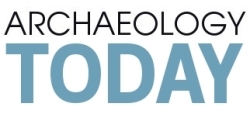
September 8th, 2013
George Washington’s Incredible Garbage Dump
Most people wouldn’t even think about an 18th century refuse pit. But for archaeologists, it can be a veritable goldmine of information about the past. And for archaeological investigators at George Washington’s Mount Vernon home and estate near the Virginia banks of the Potomac river in 1990, no pile of garbage was as precious as the one located just south of the famous restored mansion house in the area historically known as the south grove. (Popular Archaeology)
Fragments of Mayan Jaguar Sculptures Found in El Salvador
At least 160 fragments of sculptures, possibly of jaguars, were discovered by specialists in the archaeological park of Cihuatan, located in central El Salvador, the Culture Secretariat said. The remains come from “five or six feline sculptures,” found along with pieces of two censers, the secretariat said in a statement. (Latin American Herald Tribune)
Machu Picchu’s ‘sister city’ may finally get visitors
The Choquequirao ruins in Cusco, Peru. Choquequirao, which means “cradle of gold” in Quechua, is believed to be the last refuge of Incan rulers who fled Cuzco after its leader Manco Inca was defeated by Spanish conquistadors. The former mountaintop refuge of Incan royalty has elegant halls and plazas much like those of fabled Machu Picchu just 30 miles away. Yet only a handful of tourists visit the ruins each day, those willing to make a two-day hike to reach its majestic solitude. (MercuryNews.com)
Secret ‘slave’ tunnels discovered under Roman emperor’s villa
Amateur archaeologists have uncovered a massive network of tunnels under the Roman Emperor Hadrian’s Villa in Tivoli, Italy. The underground passageways likely allowed thousands of slaves and merchants to keep the estate running without creating any distraction at the street level. (NBCNews.com)
Flag Fen Bronze Age boats older than was first thought
Eight Bronze Age boats discovered in a deep Cambridgeshire quarry are much older than it was first thought, carbon-dating research has revealed. The vessels, found by archaeologists at Must Farm near Peterborough in 2011, have now been dated to about 1500 BC, 200 years older than was first thought. (BBC News)
‘Slip’ between monumental cup and CAG’s lip
The Archaeological Survey of India has come under glare after a CAG report revealed in late August that 92 protected monuments in its care cannot be traced, including seven in the Calcutta circle. The ASI has, however, termed the report erroneous and attributed the “wrong” figures to “miscommunication” and a “lack of co-ordination” between the CAG’s performance audit team and its own field officers who may not have been updated about the existence of the monuments. (The Telegraph)
New Microplasma Device Could Potentially Revolutionize Archaeology
A team of researchers, including experts from Uppsala University in Sweden have developed a miniature device that they claim could revolutionize the way in which archaeologists date objects they discover in the field. The instrument in question is being described as a high-tech microplasma source that is capable of exciting matter in a controlled, efficient way. While the device, which is detailed in a paper appearing in the Journal of Applied Physics, could be used in a wide range of applications in harsh environments, the authors claim that it could drastically change the study of artifacts. (RedOrbit.com)
Medieval church found in King’s Square
ARCHAEOLOGISTS working for City of York Council may have found evidence of a medieval church in King’s Square. The team is working to transform the square, and also found the foundations of a Victorian church at the site during the dig. (YorkPress)
About 1.75 million years ago, our human ancestors, the hominins (who you may remember as the hominids), achieved a technological breakthrough. They began to craft stone hand axes (called Acheulean tools) in ways that required more planning and precision than had been used in earlier tool-making processes. Around the same time, these prehistoric people began to talk. (New Hampshire News)





